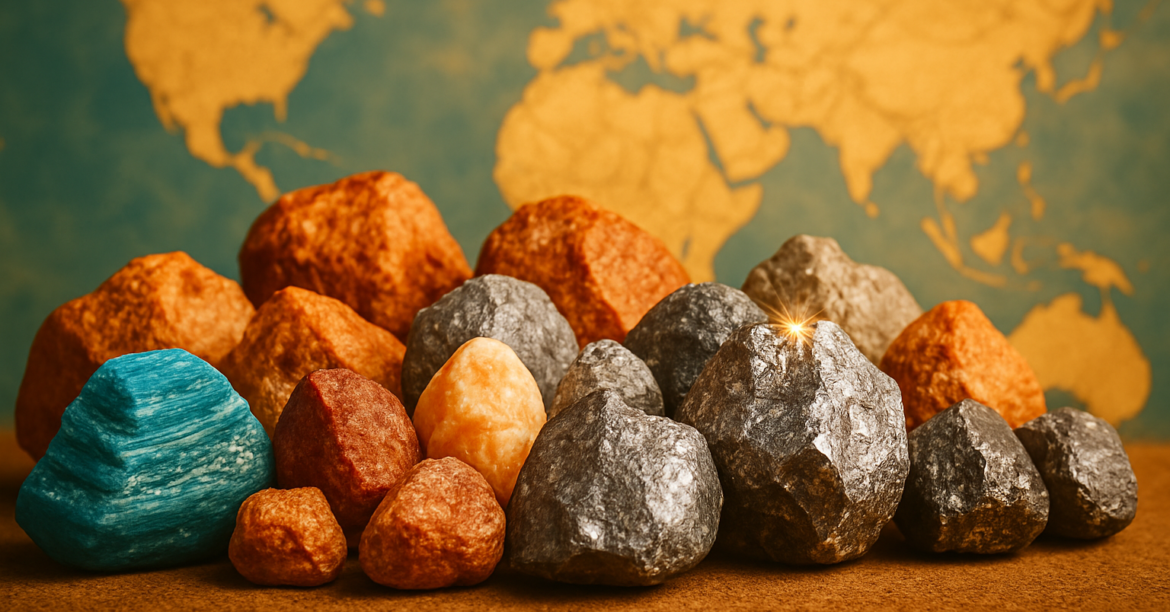Earlier on in the year, when the US President Donald Trump embarked on his unprovoked trade war with the rest of the world, with China being the principal target of this onslaught, the global economy was destabilized as the US plays a major role in the global economy with most countries depending on the huge US market for their export revenues. While for most countries, the response was to also increase tariffs on US goods, which in reality was a futility because most of these countries were more dependent on the US for trade revenues than the US was on them.
Realizing this, even though China also slammed prohibitive tariffs on US goods, they went a step further and completely restricted the sale of rare earth minerals (REMs) to the US and this certainly hit the US where it hurts because of the strategic importance of REM to the evolving global economy which as resulted in a growing global demand for REMs.
The world’s increasing reliance on technology has sparked a high-stakes race for REMs, as they are necessary to produce essential components for various high-tech applications, including smartphones, electronics, renewable energy, and defence technologies. As demand surges, the global economy is being reshaped by the pursuit of these precious resources.
Rare earth minerals are a group of 17 elements crucial for advanced technologies. The quest for REMs has become a geopolitical and economic flashpoint, with nations competing for access to these scarce resources. China currently dominates the market, controlling over 60% of global production and more than 85% of the processing capacity. However, other countries are seeking to diversify supply chains and reduce dependence on Chinese exports.
The global REMs market size was estimated at $6.3 billion in 2025 and is expected to grow at a compound annual growth rate of 13.5% from 2025 to 2033, reaching $17.4 billion by 2033. With the way technology is playing an increasingly dominant role in the global economy, it becomes apparent that access to these REMs that are necessary for the production of high-tech devices is a must to remain relevant in the emerging global economy.
The growth in the REMs market is expected to be driven by increasing demand for clean energy technologies, electronics, and defence systems. This growth has far-reaching economic implications as it has caused trade tensions, particularly between the US and China. The export restrictions and tariff hikes imposed earlier in the year as a result of the trade war between the US and China disrupted global supply chains, leading to price volatility and concerns about long-term availability.
The increased use of REMs in renewable energy, especially in the production of electric vehicles (EVs), will result in a significant drop in the use and demand for fossil fuels with consequent effects for countries that depend on fossil fuels for revenue, while there will be a major shift in the global energy market.
The REMs sector is attracting significant investment, as companies seek to develop new mines, processing facilities, and recycling technologies. African countries like South Africa, Malawi, Angola, Tanzania, and Namibia have also been major beneficiaries of these new investments as exploration companies seek to diversify their sources of these much-sought-after minerals. This influx of capital is driving innovation and growth in the industry. Countries like Australia, the US, and Canada are also expanding their REM industries, creating new opportunities for growth and employment.
The quest for rare earth minerals is reshaping the global economy in several ways as countries seek to diversify their sources and reduce dependence on China. The REMs industry is also creating new economic opportunities for emerging powers, such as Australia, Canada, and some African countries, in what might be deemed as the new “gold rush”. The pursuit of REMs is also driving technological innovation, as companies develop new extraction, processing, and recycling technologies to meet growing demand.
The quest for rare earth minerals is a high-stakes game with far-reaching economic implications. As demand for these critical resources continues to grow, the global economy will be shaped by the pursuit and use of REMs. The outcome will depend on the ability of nations and companies to adapt to changing market dynamics, invest in innovation, and develop sustainable supply chains.
Oshobi, a development economist, management consultant, and author, writes from Lagos, Nigeria.

